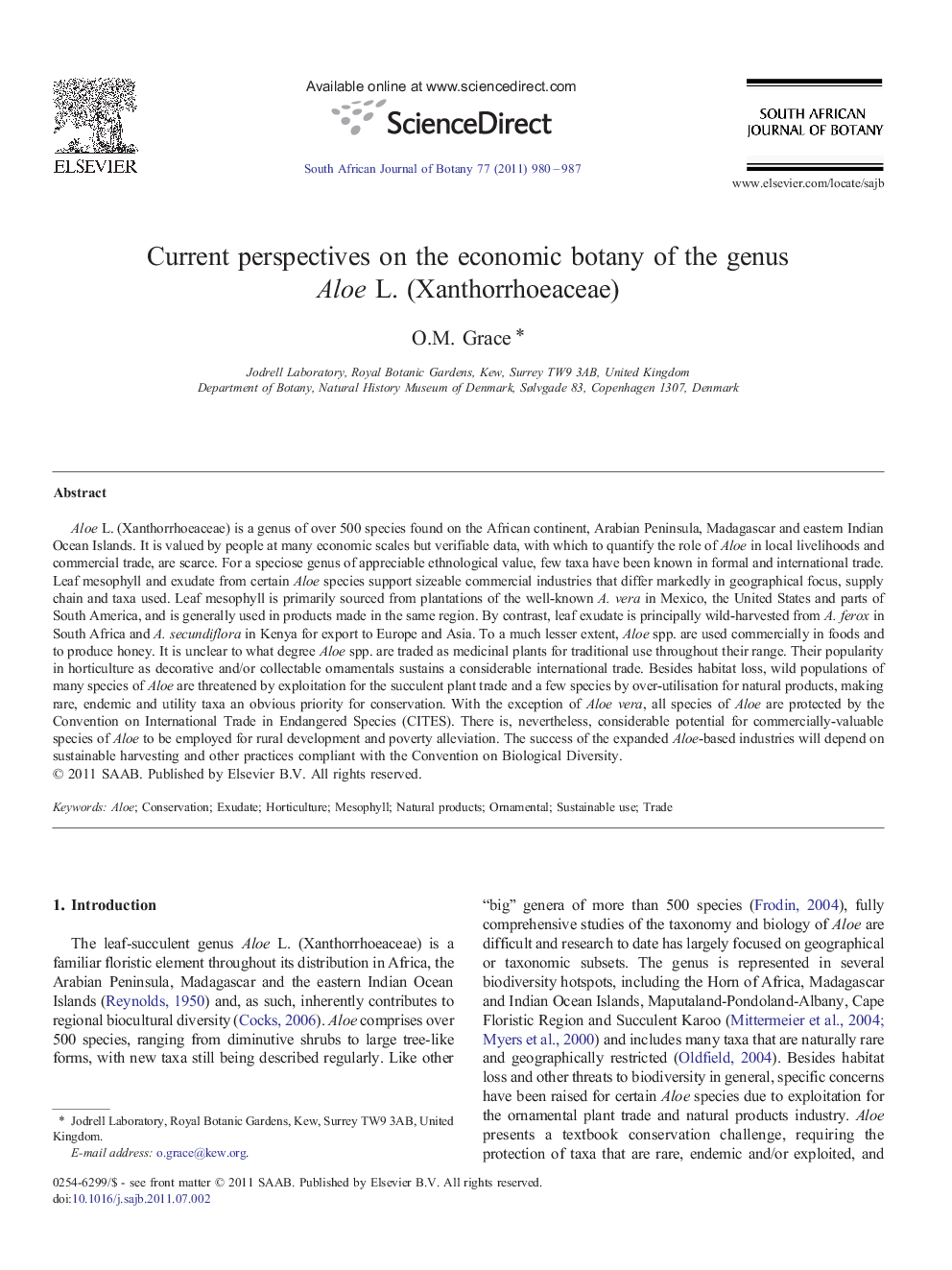| کد مقاله | کد نشریه | سال انتشار | مقاله انگلیسی | نسخه تمام متن |
|---|---|---|---|---|
| 4521128 | 1625181 | 2011 | 8 صفحه PDF | دانلود رایگان |

Aloe L. (Xanthorrhoeaceae) is a genus of over 500 species found on the African continent, Arabian Peninsula, Madagascar and eastern Indian Ocean Islands. It is valued by people at many economic scales but verifiable data, with which to quantify the role of Aloe in local livelihoods and commercial trade, are scarce. For a speciose genus of appreciable ethnological value, few taxa have been known in formal and international trade. Leaf mesophyll and exudate from certain Aloe species support sizeable commercial industries that differ markedly in geographical focus, supply chain and taxa used. Leaf mesophyll is primarily sourced from plantations of the well-known A. vera in Mexico, the United States and parts of South America, and is generally used in products made in the same region. By contrast, leaf exudate is principally wild-harvested from A. ferox in South Africa and A. secundiflora in Kenya for export to Europe and Asia. To a much lesser extent, Aloe spp. are used commercially in foods and to produce honey. It is unclear to what degree Aloe spp. are traded as medicinal plants for traditional use throughout their range. Their popularity in horticulture as decorative and/or collectable ornamentals sustains a considerable international trade. Besides habitat loss, wild populations of many species of Aloe are threatened by exploitation for the succulent plant trade and a few species by over-utilisation for natural products, making rare, endemic and utility taxa an obvious priority for conservation. With the exception of Aloe vera, all species of Aloe are protected by the Convention on International Trade in Endangered Species (CITES). There is, nevertheless, considerable potential for commercially-valuable species of Aloe to be employed for rural development and poverty alleviation. The success of the expanded Aloe-based industries will depend on sustainable harvesting and other practices compliant with the Convention on Biological Diversity.
► A few species of Aloe support substantial commercial natural products industries.
► Aloes are popular collectables and common in the international succulent plant trade.
► Rare, endemic and utility species of Aloe are priorities for conservation.
► Sustainable harvesting assessments and trade data are lacking.
► Aloe industries have potential to contribute to poverty alleviation.
Journal: South African Journal of Botany - Volume 77, Issue 4, October 2011, Pages 980–987